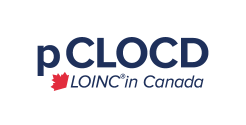The latest out-of-cycle pan-Canadian LOINC Observation Code Database (pCLOCD) release, R05.20.01_2.77, is now ready for review and implementation on Terminology Gateway. This release, updated since March 2024, features data quality enhancements from our new Terminology Server project.
Highlights of this Release:
- 155 edited records. No new records added since the previous version.
- Major and Minor type changes include: Corrections to pan-Canadian attributes (Component Name, Name, and Example Viewer) marked as R05.20.01_2.77. Change descriptions for each modified concept is available in the Change History field.
- Various updates for accuracy and consistency:
- Removal of whitespaces
- Grammatical corrections to align with pCLOCD editorial guidelines (found in Section 3.1 of the pCLOCD Maintenance Guide)
- Grammatical corrections to pCLOCD/LOINC content to align with LOINC TALL Man Lettering (documentation available in section 2.1.4 of the LOINC user guide)
Read all about the changes in the pCLOCD release notes.
Submitting Requests for Changes
Requests for changes to pCLOCD and LOINC can be made via Infoway’s request for change management system, InfoRMS, which is accessible after logging into your Infoway account. If you do not have an Infoway account, register for an InfoCentral account and accept the appropriate license agreements.
Learn More
To learn more about pCLOCD, visit the LOINC and pCLOCD Standards page. Here, you'll find resources to help you understand this terminology standard and connect with the community.
If you would like more information about any of our products or services, please contact us.


